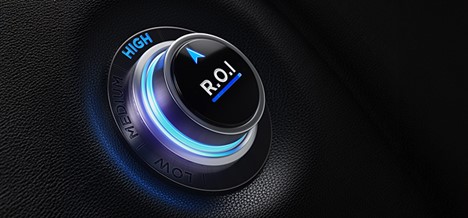This article was written as part of a partnership between 1to1 Media and the European Customer Experience Organization.
Talk to someone like Lynn Hunsaker and she’ll tell you there’s some 24 metrics to convey the value of the customer experience. She’s dissected and painstakingly diagrammed each one.
When all the Venns, funnels, PowerPoints, histograms, flowcharts, and scatter plots are set aside, however, something remarkable becomes evident: While there are two dozen CX ROI metrics to track, companies need only focus on four.
That’s music to the ears of those struggling to improve the experience. They already know focusing on too many goals at once means there’s no focus at all.
Hunsaker gets it. The chief customer officer of ClearAction Continuum reveals four — just four — CX ROI benchmarks to prioritize during the “Four Gold CX ROI Metrics LinkedIn webinar hosted by the European Customer Experience Organization (ECXO) earlier this month.
The “Four Gold CX ROI Metrics” webinar was the final episode in the three-part series hosted by ECXO. The previous webinars were “Fast-Track CX ROI with 3 Levels of Improvement” in May and the “Mastering the Maze of CX Metrics & Money” in April.
In the webinar, she labels these metrics “gold” because success with these four CX ROI metrics triggers a domino effect that fuels success with all 24 metrics to maximize return on CX investments.
“In the customer experience, we are looking to achieve quite a lot — higher reputation, greater ease of work and ease of business, more revenue, more market share, more lifetime value. If there were only four things to focus on in order to remove the revenue roadblocks for all of those, wouldn’t that be wonderful?” she asked.
Mirage or meaningful? You pick.
When it comes to the customer experience, chasing the mirage (and all its shiny objects) can be more enticing than doing the real work of finding the root cause of friction and eliminating it once and for all.
That’s why get-rich-quick schemes and weight loss fads will always be with us. It’s human nature to seek the short-term wins. Hunsaker draws parallels between short-sighted efforts to improve fitness with misguided efforts to improve CX.
“You might take miracle weight loss pills, weigh yourself every hour — such as we do with customer satisfaction surveys — to see if your fitness is any better every hour. Tummy tucks, body wraps … Spanx, fasting. All these things are temporary fitness mirages,” she says. “They are not real. They aren’t really ‘fitness.’ You may fit into your tuxedo or evening gown for the wedding or a party by doing these things, but it is unstable, unsustainable. It doesn’t have lasting effects.
“So much of what we do in CX is like that,” Hunsaker adds.
A better approach to fitness is to focus on the most meaningful metrics such as improved cardio/strength, healthy eating, restorative sleep, and good stress management. These four ingredients of genuine fitness have counterparts in CX.
4 gold CX ROI metrics
Adopt customer-centric thinking and customer-centric actions across the company, not solely in sales and marketing, but also human resources, security, product development, and finance, Hunsaker says.
“It’s how you collect, clarify, communicate, and champion CX insights” that matters most, she adds. The four gold CX ROI metrics are:
- CX-inspired growth involves leveraging insights before designing a product, modifying incentives, pricing, warranties, and checking in with customers frequently to understand what they value, what they don’t, and adjusting accordingly.
- CX-inspired performance involves managing company performance in all functional area to prevent friction in the customer journey.
- CX-inspired strategies involve mining data to understand customer viewpoints collected across all channels and making new insights available to all operational areas, not just marketing, sales, and service.
- CX-inspired efficiencies is about being more efficient and not just cutting staff to achieve cost reduction goals.
“You don’t need to hire a whole team of people,” she says. “You just need to think differently.”
A 9700% CX ROI? Not bad.
“No more layoffs. No more austerity,” Hunsaker says. “We should be aiming for [customer] lifetime value because we are looking to maximize revenue, minimize cost, and maximize customer retention.” Rather than creating one-off incentives to prompt a specific customer response, companies should instead “mistake-proof” the root causes that restrict revenue growth, cost reduction, and customer loyalty/retention — for a permanent win.
Hunsaker cites an example showing how a 9700% CX return on investment is achievable for a company taking the long view. Consider a product that retails for $2,000 that generates a modest 15 returns and 20 customer support escalations per month. Because the issue consumed a mere 20 manpower hours each month, the problem could be perceived as mere “noise.” Inconsequential. The cost of doing business.
Over the course of years, however, the cost of ignoring the product issue mushroomed to nearly $2 million, she says.
An alternative path forward, to commit nine months of engineering time and CX expertise (30 hours weekly) for remediation, would remedy the product issue once and for all, achieving that astounding ROI in its first year, and in all subsequent years, too. Factored into Hunsaker’s 9700% ROI equation is all the marketing and sales budget dollars no longer needed to offset lost sales and customer churn caused by the product issue. That’s funds freed up that can be allocated to high-value CX opportunities.

